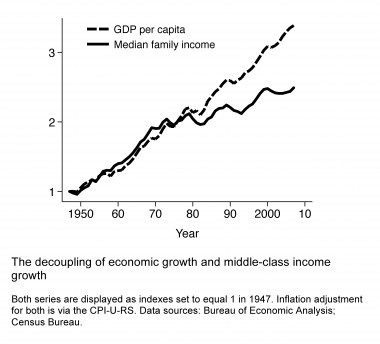Declining union density is one of the contributing factors to the last few decades of rising inequality. Estimates on its impact vary, but one often-cited study found that declining union density accounts for around 20 percent of the recent inequality growth. The Economic Policy Institute had a blog post yesterday with graphs and other resources spelling out more exactly the relationship between unions and inequality. Here, I thought I would explain exactly how unions are supposed to reduce inequality.
The way unions work is quite simple. Workers at a workplace join together and then bargain collectively on workplace issues such as pay, benefits, and conditions. Because union workers bargain together and have the ability at times to shut down production, they can win higher compensation. So when a company becomes more productive, unionized workers are more able to capture some of its productivity increases for themselves, instead of the increases flowing just to shareholders and management.
This process generates more equality on two fronts then: it both increases labor’s share of productivity increases while decreasing the share of executive and owners. When union coverage is sufficiently dense, their bargaining power also has spillover effects that increase the income share of even non-unionized workers. When unions lose their bargaining strength however, labor loses its ability to capture some of the productivity increases, and inequality rises. That is, economic growth and middle-class income growth becomes decoupled. This is the story of the last few decades.

Perhaps there is some other way to keep inequality down that does not involve unions, but alternative ideas are far and few between. There are some plausible ways to do so purely through the state — tax-and-transfer programs for instance — but for those ideas to ever to be implemented, they will require a mobilized and funded political force that only organized labor is really capable of delivering.